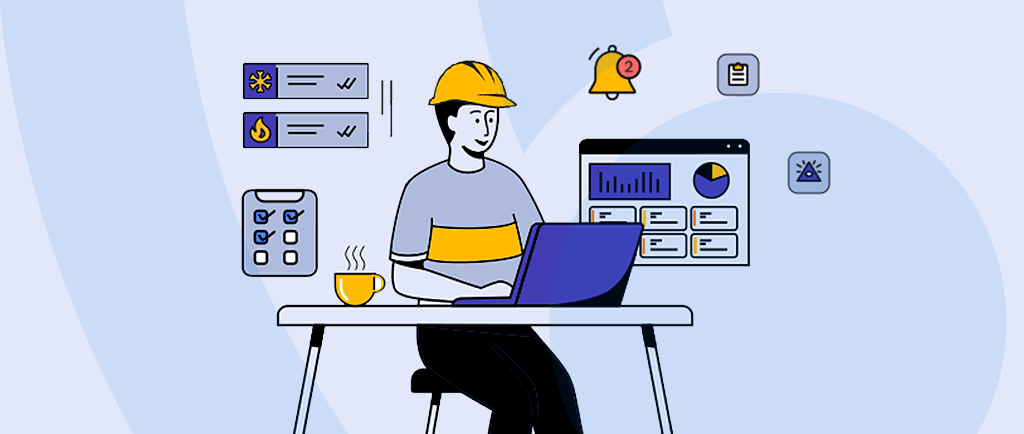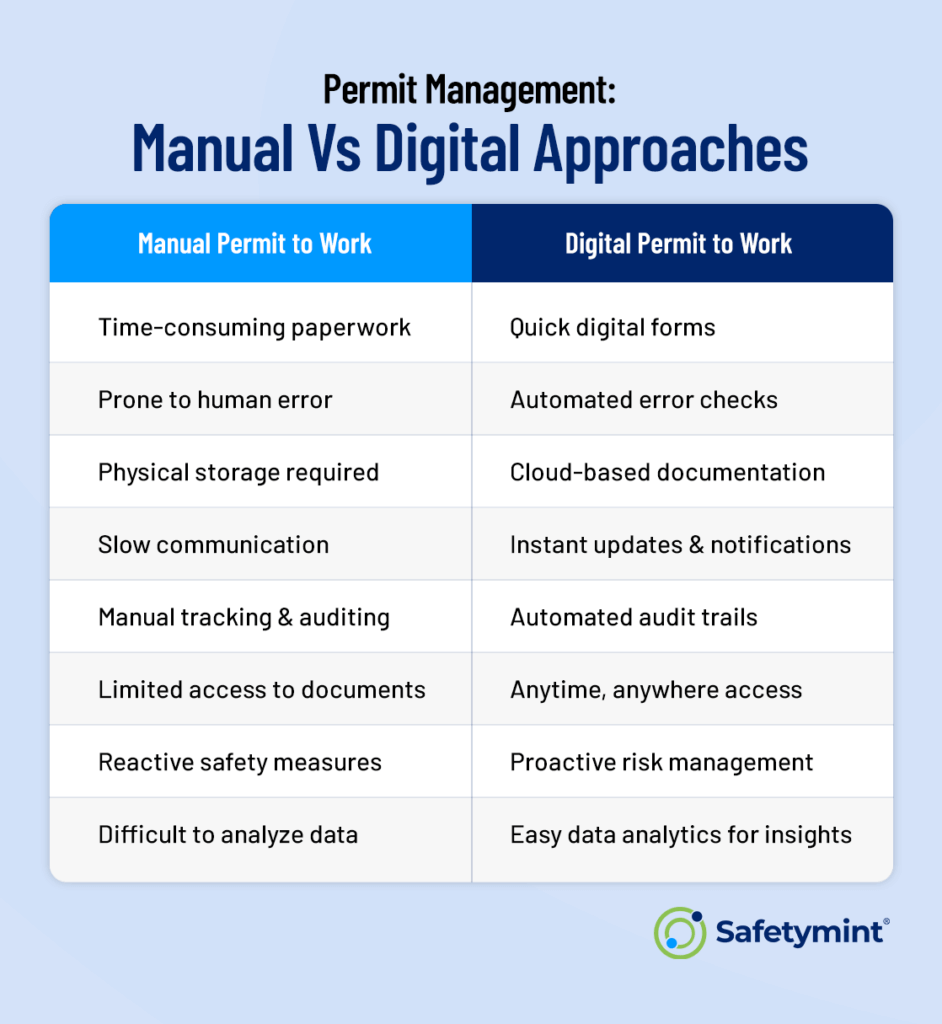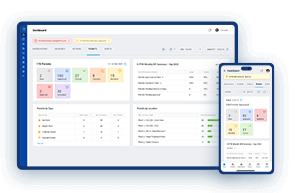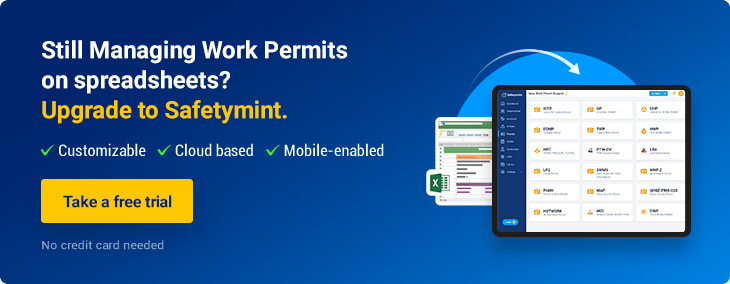
8 Compelling Benefits of an Electronic Permit to Work System
In many workplaces, special tasks that are not part of the daily routine require extra caution. That’s why using a permit for these non-routine works is crucial. It’s a way to make sure everything is checked and safe before any work begins. This step helps prevent accidents and keeps everyone informed about what’s happening and why it’s important.
Unfortunately, the old way of managing these permits, with piles of paper or confusing spreadsheets, is full of problems. It’s easy for things to get lost, hard to keep track of who’s doing what, and even harder to make sure everyone follows safety rules.
Enter the digital solution: A modern Permit to Work Management system changes everything. It streamlines the whole process, making it easier, faster, and safer for everyone involved.
In this blog post, we explore the significant benefits of transitioning to an electronic Permit to Work (PTW) system from traditional manual methods.

8 Key benefits of using an electronic permit to work system
1. Enhanced Safety and Compliance:
An electronic permit to work system integrates all safety checks and compliance standards into one streamlined process. It ensures that no task starts without the necessary approvals, minimizing the risk of accidents. This digital approach helps companies keep up with safety regulations easily, making the workplace safer for everyone.
2. Improved Efficiency and Productivity:
Switching to a digital system cuts down on the time spent filling out and processing paperwork. This means approvals can be granted faster, and work can start sooner. It also improves communication across teams, as everyone has access to the information they need instantly, leading to a more productive work environment.
3. Centralized Documentation:
With a PTW software, all documents are stored in one place. This makes it easy to find and manage permits, reducing the risk of lost paperwork. It ensures transparency in the permit process, as everyone involved can see the status of permits in real time.
4. Real-time Updates and Communication:
Digital systems provide instant updates and notifications about permit statuses, changes, or emergencies. This keeps everyone informed and allows for quick reactions to any issues, ensuring that all team members are aware of current and upcoming tasks.
5. Enhanced Accountability and Traceability:
Every action taken within the system is recorded, offering a clear and detailed audit trail. This feature not only enhances accountability among workers but also simplifies compliance checks and audits. Knowing who did what and when promotes a culture of responsibility and safety.
6. Data-driven Decision Making:
By collecting and analyzing data on permits and work processes, digital systems help identify patterns, bottlenecks, and areas of risk. This information enables managers to make informed decisions to improve safety protocols and operational efficiency, leading to a safer and more efficient workplace.
7. Scalability and Flexibility:
A digital permit to work system can easily adapt to the changing needs of a business, whether it’s expanding operations or adjusting to new types of work. This flexibility ensures that the system grows with your company, always meeting your safety management needs.
8. Cost Savings:
Over time, moving to a digital system can save money by reducing the need for physical paperwork, printing, and storage costs. Additionally, the increased efficiency and productivity can lead to reduced operational costs, making it a financially smart choice for businesses looking to improve their permit management process.
Related read: Our listing of the best Control of Work software.
Watch video: Overview of the Safetymint Permit to Work Software
Ben Johnson is a dedicated Customer Success Executive at Safetymint. With a strong commitment to excellence, Ben works closely with customers to ensure they fully leverage the capabilities of Safetymint to its fullest potential, aiming to significantly reduce or mitigate safety risks and incidents.





